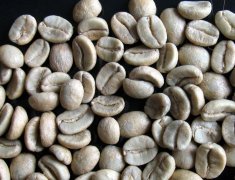Introduction to three kinds of high-quality coffee beans
At present, the main species of coffee plants growing in different regions of the world include the following: ARABICA/ROBUSTA/LIBERICA/DEWEVREI/STENOPHILLA/CONGENSIS/ABEOKUTAS/KLAINII/ZAANGUEBARIAE/RACEMOSA. The coffee most commonly used to make coffee is divided into three main categories-small seed coffee beans (Arabica), medium seed coffee beans (Robusta), and Liberian coffee beans (Liberica).
Small seed coffee beans (Arabica)-small seed (Arabica) coffee beans are best grown in temperate and subtropical environments at elevations of 3000-6500 feet (600-2000 meters) above sea level, which can prolong their growing season and make their coffee taste more intense. Coffee beans are oval and flat. Small seed (Arabica) coffee contains more elegant flavor, rich taste, strong smell, high acidity, smooth texture, bringing strong aroma and smoothness to the coffee. Its caffeine content is about 1%. Because of its exquisite growing environment, each coffee tree produces only 1-1.5 pounds of coffee a year. Many professional producers and enthusiasts who are keen on coffee are happy to choose this kind of coffee. Arabica coffee accounts for 75 per cent of global production. As the small-grain coffee tree is vulnerable to diseases and insect pests, frost and drought, it needs a very delicate environment to cultivate, especially suitable climatic conditions.
Medium seed coffee beans (Robusta)-medium grain coffee beans (Robusta) come from a variety with high yield and less susceptibility to diseases and insect pests, and are more able to withstand large temperature differences than small ones. It is best planted in the highlands with lower elevations. Medium-grain coffee beans, just like the English name "Robusta", have strong taste and texture, bitter taste, and low acidity, bringing strength and concentration to the coffee. The coffee contains 2% caffeine and produces more beans than Arabica coffee, which can produce 2-3 pounds of coffee a year. This kind of coffee is often treated as low-grade coffee on the market. Although you can't find it in stores that sell high-quality coffee, Robusta coffee is widely used to make instant coffee and blended coffee, as well as frozen and canned coffee.
Liberica coffee beans-Liberica coffee is recognized as the third largest coffee variety in the coffee trade. It is also grown at low elevations. This coffee is produced in Africa and is exported only to Europe. It is also a cheap coffee, very similar to Robusta coffee.
Important Notice :
前街咖啡 FrontStreet Coffee has moved to new addredd:
FrontStreet Coffee Address: 315,Donghua East Road,GuangZhou
Tel:020 38364473
- Prev

Boutique coffee beans are better than coffee beans in CoE competition
CoE (Cup of Excellence) competition wins coffee beans Nicaragua Nicaragua 2005 CoE (Cup of Excellence) competition wins coffee beans, that is, winning coffee beans in the competition, the output is very small, relatively rare. The appearance is very neat, basically do not need to pick, it is recommended to bake around the middle of the bean, cinnamon roast cinnamon baking degree. Nicaragua Nic
- Next

Blue Mountain Coffee is the best coffee in the world.
A good cup of coffee comes from a small coffee bean, which has experienced a long time and many elaborate crafts, and has been integrated into the efforts of countless people. It can be said that cups are hard to come by. There are seven decisive factors for the quality of a cup of coffee. The first three depend on the farmer who grows the beans, the type of coffee tree, where the coffee is grown, and how it is grown.
Related
- Beginners will see the "Coffee pull flower" guide!
- What is the difference between ice blog purified milk and ordinary milk coffee?
- Why is the Philippines the largest producer of crops in Liberia?
- For coffee extraction, should the fine powder be retained?
- How does extracted espresso fill pressed powder? How much strength does it take to press the powder?
- How to make jasmine cold extract coffee? Is the jasmine + latte good?
- Will this little toy really make the coffee taste better? How does Lily Drip affect coffee extraction?
- Will the action of slapping the filter cup also affect coffee extraction?
- What's the difference between powder-to-water ratio and powder-to-liquid ratio?
- What is the Ethiopian local species? What does it have to do with Heirloom native species?

